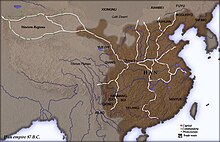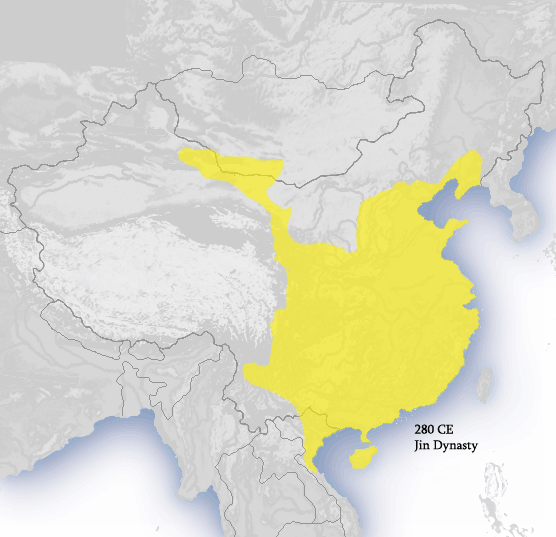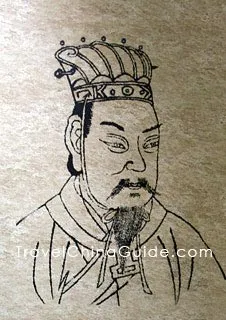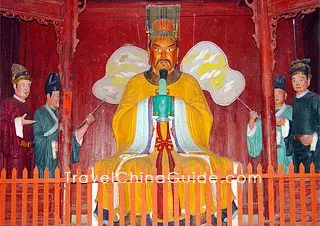The Lý dynasty ( LEE; Vietnamese: [ɲâː lǐ]) (Vietnamese: Nhà Lý, Hán Nôm: 家李), sometimes known as the Later Lý dynasty, was a Vietnamese dynasty that began in 1009 when Lý Thái Tổ overthrew the Early Lê dynasty and ended in 1225, when the queen Lý Chiêu Hoàng (then 8 years old) was forced to abdicate the throne in favor of her husband, Trần Cảnh. During Lý Thánh Tông's reign, the official name of Vietnam became Đại Việt.
he Lý were of Chinese ethnicity.[2] Fujian province, Jinjiang village was the origin of Lý Thái Tổ 李公蘊, the ancestor of the Lý dynasty ruling family.[a][3][4][5] China, Fujian was the home of Lý Công Uẩn. The ethnic Chinese background
During the Lý dynasty, the Vietnamese began their long march to the south (Nam tiến) at the expense of the Chams. Lê Đại Hành of the Early Lê dynasty had sacked the Cham capital of Indrapura in 982, whereupon the Chams established a new capital at Vijaya.
This was captured twice by the Lý army, however, and in 1079 the Chams
were forced to cede to the Lý rulers their three northern provinces.
Soon afterwards, Vietnamese peasants began moving into the untilled
former Cham lands, turning them into rice fields and moving relentlessly
southward, delta by delta, along the narrow coastal plain. The Lý
Emperors supported the improvement of Vietnam's agricultural system by
constructing and repairing dikes and canals and by allowing soldiers to
return to their villages to work for six months of each year. As their
territory and population expanded, the Lý Emperors looked to China as a
model for organizing a strong, centrally administered state. Minor
officials were chosen by examination for the first time in 1075, and a
civil service training institute and an imperial academy were set up in
1076. In 1089 a fixed hierarchy of state officials was established, with
nine degrees of civil and military scholar officials. Examinations for
public office were made compulsory, and literary competitions were held
to determine the grades of officials.[7]
In foreign relations with the Song dynasty during the Lý dynasty, Vietnam acted as a vassal state, although at its zenith it had sent troops into Chinese territory to fight the Song. In 1075, Wang Anshi, the prime minister, told the Song emperor that Đại Việt was being destroyed by Champa,
with less than ten thousand soldiers surviving, hence it would be a
good occasion to annex Đại Việt. The Song emperor mobilized troops and
passed a decree to forbid all the provinces to trade with Đại Việt. Upon
hearing the news, the Lý ruler sent Lý Thường Kiệt
and Tôn Đản with more than 100,000 troops to China to carry out a
pre-emptive attack against the Song troops. In the ensuing 40-day battle
near modern-day Nanning,
the Đại Việt troops were victorious, capturing the generals of three
Song armies. In 1076, the Songs formed an alliance with Champa and the Khmer Empire and sent troops to invade Đại Việt. Lý Nhân Tông
again sent Lý Thường Kiệt. Being one of the many great military
strategists of Vietnam, Lý Thường Kiệt had placed spikes under the Như
Nguyệt River before tricking the Song troops into the deadly trap,
killing more than 1,000 Song soldiers and forcing the Song army to
retreat. According to legend, during this time Lý Thường Kiệt had also
composed the famous poem Nam quốc sơn hà
(Rivers and Mountains of the South Nation), which asserted the
sovereignty of Vietnam over its land. This poem is considered the first
Vietnamese Declaration of independence.
For 30 years, the country was torn apart by war between various rival
warlords. The devastating civil war ended with victory of the Imperial
force, led by Trần Thủ Độ, the head of Trần clan. Some years later, the last sovereign of the dynasty, Empress Regnant Lý Chiêu Hoàng receded the throne in favor of her consort, Trần Cảnh, one of the nephews of Trần Thủ Độ.
============================================

During Song times, new developments in rice cultivation — especially
the introduction of from what is now Central Vietnam,
along with
and — spectacularly
increased rice yields. Rice was used primarily as food, but was also
used to brew the wine consumed in homes and taverns.
Rice was grown primarily south of the Yangzi River. This
area had many advantages over the north China plain, as the climate is
warmer and rainfall more plentiful. The mild temperatures of the south
often allowed two crops to be grown on the same plot of land — a summer and a winter crop.
The many rivers and streams of the region facilitated shipping,
which reduced the cost of transportation and, thus, made regional specialization
economically more feasible. During the Song period, became the .
s grown throughout East Asia before modern times,
— to level the paddy fields, clear irrigation ditches, plant and
especially transplant the seedlings, as well as to weed, harvest,
thresh, and husk.
Farmers developed ,
including drought resistant and early ripening varieties, as well as
rice suited for special purposes such as brewing. They also remade the
landscape by , so that rice could be grown on it. helped to disseminate the best techniques for rice cultivation.




